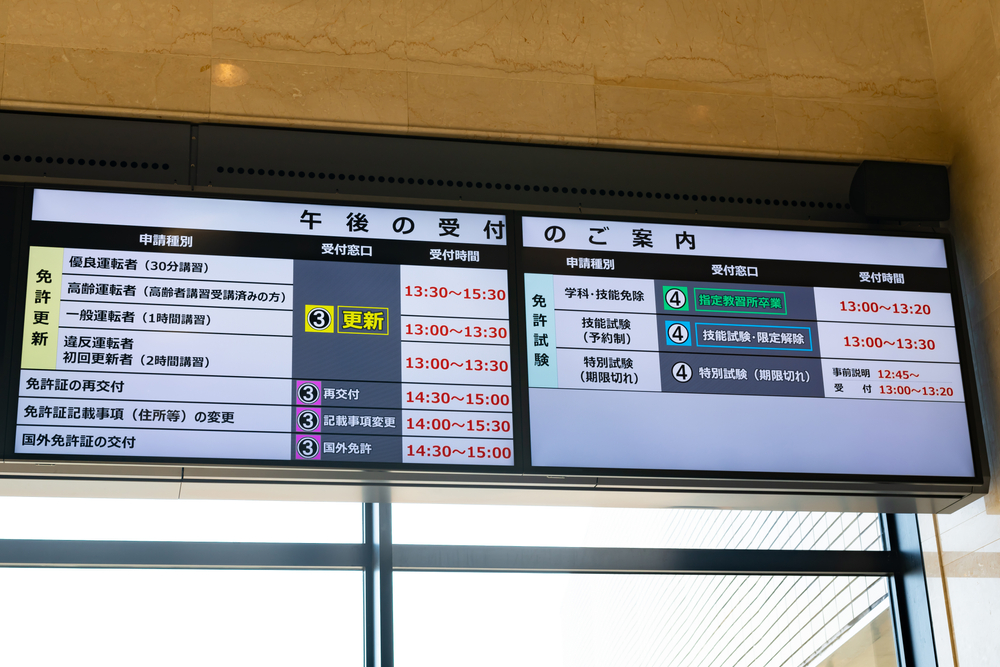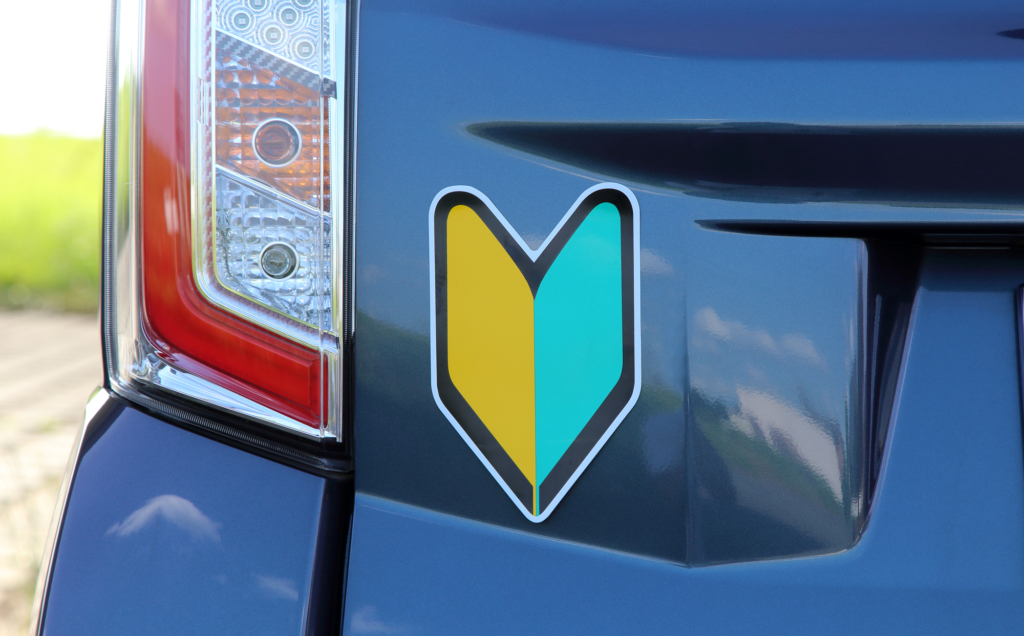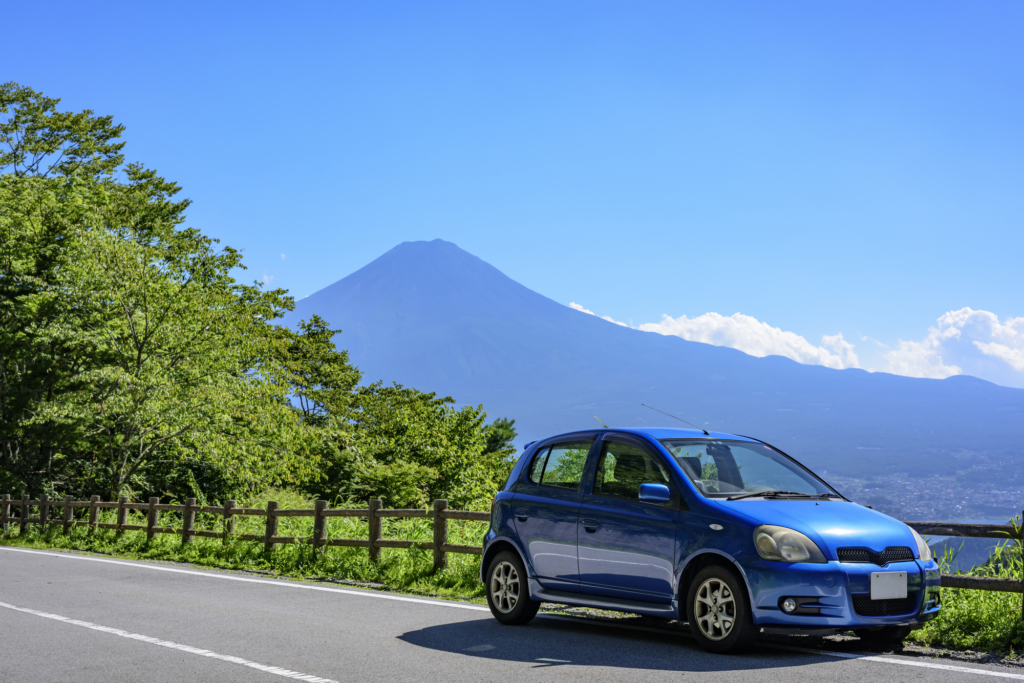Those who have a driver’s license in their home country can apply for an international driving permit or license conversion, but what if you’re already in Japan and need to start from scratch with no previous licenses or even no driving experience at all? Let us walk you through the process, from enrolling in a driving course until you can hit the road solo!
Table of Contents
Who Can Get a Driver’s License?

In this article, we’ll cover how to get a 普通自動車免許 (futsū jidōsha menkyo), meaning a license that will allow you to drive regular cars and vans for personal use, with a passenger limit of 10 people. Such cars are classified as 普通自動車 (futsū jidōsha), or “ordinary vehicles.” Like other countries, you can also choose whether to get a license for automatic cars only (AT) or both automatic and manual cars (MT).
To obtain this license, you must be 18 years or older. However, you’re technically permitted to enroll in driving schools and begin the first stage of driver’s education at 17, as long as you’ll already be 18 when you take the test for your provisional license (which we’ll explain more about below.)
You should also test 0.7 or higher with both eyes and at least 0.3 with either eye (including use of glasses, contact lenses, etc.). This will be checked upon arrival at your driving course and your final theory test with an eye exam (視力検査, shiryoku kensa), where you will typically be asked to identify traffic light colors and the missing sides in circles. Those with conditions affecting hearing, ability to differentiate colors, or physical ability should consult with the local police or a nearby driving school.
Overall Process to Get Your License

So how do people actually get a driver’s license? The majority of drivers in Japan do so through long-term courses at designated driving schools (指定自動車教習所, shitei jidōsha kyōshūjō) or intensive courses (合宿免許, gasshuku menkyo).
Long-term courses generally take a few months, depending on how you schedule your time, and can be attended around school and work. They cost 300,000 yen on average. Meanwhile, intensive courses can be as short as two weeks, during which you stay on-site and attend classes on most days (if not every day). These are mostly offered as a package including food and accommodation for participants in other prefectures, for an average fee of 200,000 yen. Of course, overall costs depend on the course’s location, the season in which you hope to attend, and foreign language options.
Speaking of language, the higher your Japanese ability, the more likely you’ll have an easier time with the course. If you’re in a regular Japanese driving course, it’s vital that you’re able to communicate with your instructors for both lessons and the actual driving test. In addition, there’s a lot of new, specific vocabulary to learn, so memorizing all this might be difficult if you’re already struggling to understand everyday Japanese. That’s not to say it’s unachievable, though – with enough effort, it’s definitely possible!

Just to make things clear before we go into more detail about these driving courses, it’s actually possible to skip regular courses and try your luck solo with the theory and practical tests at your local test center. However, it’s said that for those who take this option, the pass rate for the final practical test is less than 10%, as the examiners are far more strict and pedantic than their ordinary driving course counterparts. You’ll also need to study the same theory syllabus (covering Japan’s traffic law and driving customs) anyway, so it’s not recommended unless you’re already a confident driver who just happens to lack a full license allowing you to drive unrestricted in your home country.
With that out of the way, let’s run through how to get your driver’s license from scratch through driving courses!
1. Enroll in a Driving Course

First off, you’ll need to find a driving course that suits you in terms of time, financial constraints, location, language options, and so on. We’ll also explain more about the pros and cons of long-term vs. intensive courses below.
When you’ve decided, book your course either directly with the school or online. For intensive courses, there are also many websites that compare options nationwide in addition to providing booking services; for example, Menkyo Takumi or University Co-op Gasshuku Menkyo (for university students). If you’re not quite sure yet, try inquiring by phone or email. In-person consultations are also available for long-term courses at most driving schools. After you’ve confirmed your spot, pay the fees and prepare the necessary documents, which typically include a form of ID and a certificate of residence.
2. Begin Driving With Stage 1

So you’ve showed up to day one of your course. Now what?
Learner drivers’ education is split into two stages in Japan. As a Stage 1 student, you’re not yet permitted to drive on the road, even with an instructor in the other seat. Instead, you’ll start by attending classes about Japan’s traffic law and driving theory, referred to as 学科 (gakka). In practical lessons (実技, jitsugi), instructors will teach you to drive on the school’s on-site course, from basic posture to skills like steering through tight corners. All such classes are measured in 時限 (jigen), 50 minute periods that start on the hour.

For a manual license, you’ll need to take 10 periods of theory classes and 15 periods of practical lessons before your theory test (学科試験, gakka shiken) and practical exam (修了検定, shūryō kentei), both taken at the school. For an automatic license, you’ll still take 10 periods of theory classes, but only 12 periods of practical lessons. For both manual and automatic, you’ll likely have to take a 効果測定 (kōka sokutei), a mock theory test to prepare you for the real thing.
Pass everything and you’ll move on from Stage 1 and receive your 仮免許 (karimenkyo), a provisional license that will officially allow you to take to the road… with the help of your instructor, of course!
3. Hone Your Skills With Stage 2

In Stage 2, you’ll continue to attend theory classes as before, with the big difference being that you’re finally allowed out on the road! This time, practical lessons focus on what to do and look out for in real-life traffic, simple navigation from one spot to another (no Google Maps allowed), and so on. You’ll also find yourself back at the on-site course for some parking lessons.
This time, both manual and automatic license hopefuls need 16 periods for theory classes and 19 periods for practical lessons. After completing this and another mock theory test, you’ll be on track to take the final practical test (卒業検定, sotsugyō kentei), administered both on the roads in your school’s area and the on-site course. On the road, your examiner might direct you to a certain spot or ask you to navigate to another place. Back at driving school, they’ll assess your parking skills. Overall, you will be examined for not only basic driving skills and your adherence to traffic laws and manners (don’t forget those turn signals!), but your ability to follow instructions and drive safely in the current traffic and weather conditions.

After you’ve passed, all that’s left of the actual course is to receive your 卒業証明書 (sotsugyō shōmeishō), or certificate of graduation, and say goodbye to driving school!
4. Pass a Final Test and Get Your License

At this point, you may have graduated – however, you’re still technically at Stage 2. Remember how there was a big practical test at the end of the driving course, but no final theory test? After you’ve taken a rest and studied up for the multiple-choice theory exam, it’s time to find a local test center (運転免許試験場, unten menkyo shikenjō) in your prefecture, as registered on your certificate of residence. Be sure to check in advance if bookings are necessary. If not, simply show up on the day, but try to come early as test centers sometimes limit the number of participants. Depending on your location, you might also be able to access multiple time slots or tests in languages other than English.
Before you leave the house, make absolutely sure that you bring the necessary documents, including your ID and graduation certificate, as you will be unable to take the test without them. When you get there, simply follow the staff’s directions – of which there will be many, so don’t panic and just go exactly where they tell you to.

After submitting your application, taking an eye exam, paying the exam fees and so on, you’ll be issued an examination number that designates your seat for the test. Results come out in roughly an hour, so stay in the area and make sure you don’t forget your number, as they will be displayed to show successful examinees.
If you happen to fail, better luck next time. Some test centers will allow you to retake the exam on the same day, but if not, return on another day. Keep in mind that you will have to pay the necessary fees for each attempt.
On the other hand, those who have passed will be able to receive their full driver’s license! After many more directions and probably a solid waiting period, you’ll have your license in hand and be able to officially go out on the road.

Of course, this isn’t without its conditions – during the first year, drivers are classed as 初心者 (shoshinsha), meaning beginner, and are required to display a special symbol on the front and back of the car. This is commonly known as a 初心者マーク (shoshinsha māku) and can be easily found at 100 yen shops, hardware stores, and places dealing in car accessories. In addition, many car rental companies will ban beginners or specify certain rules. For example, one company’s policy could be to refuse all beginners as customers, while another might allow it as long as they are accompanied by someone who has had a Japanese driver’s license for three years or longer.
While it can be quite an arduous process, driving is definitely a convenient (and even necessary) skill for many in Japan. If you’re thinking about getting a license but you’re not sure how to get started, consider the pros and cons of both types of driving courses with us below!
Long-term Courses

Pros
- Flexible scheduling makes it easier to balance with school, work and family obligations
- More likely than intensive courses to offer languages other than Japanese (e.g. Koyama Driving School and Musashi-sakai Driving School in Tokyo)
Cons
- Takes more time to graduate overall, with an average of 2-3 months
- Scheduling conflicts may occur in busier seasons, especially if you don’t pay extra for priority scheduling, which allows you to book classes further ahead than other students
- In addition to being more expensive overall (300,000 yen on average), attracts more fees for extra classes that must be taken if you don’t pass tests or graduate on schedule, which can sometimes be avoided with “insurance” options that cover such possibilities
In general, long-term courses are more suitable for those who want to control their own driving education schedule and balance it with everyday commitments.
Intensive Courses

Pros
- Takes less time overall, with an average of 2-3 weeks
- Usually less expensive (200,000 yen on average) and offered as a package deal with food, accommodation and transport reimbursement specifically to attract learners from other prefectures
- If you don’t pass tests or graduate on schedule, extra class and accommodation fees are often covered up to a certain point
Cons
- More difficult to balance other commitments, as you generally have to spend most of your time on-site and follow a fixed schedule
As a result, intensive courses are most convenient for students on holiday or those who can take a few weeks off at a time.
General Advice

Regardless of the type of course you choose, there are definitely some other things to keep in mind before you book. Firstly, be sure to shop around for the best price and perks. Fees can vary greatly based on the season (with spring/summer holidays being the busiest), location, accommodation options, and so on. You can often score pair/group discounts if you take a friend, which gives you the added bonus of moral support and the chance to share information with each other.
Also, be sure to brush up on your Japanese if necessary. The vast majority of driving courses are instructed in Japanese, and even if your school or test center provides classes, textbooks and/or theory tests in other languages, you will still need to be able to follow the teachers’ and examiners’ instructions.
Speaking of theory, get ready to “study to the test” in addition to learning practical skills. The theory tests require certain knowledge of other types of vehicles and relevant laws, not just regular cars. They also contain lots of tricky wording, so it’s vital to get used to how questions will be presented in addition to the content. Pay attention to hints about what will be on the exam from your teachers, and if in doubt, keep taking those practice tests.
Finally, remember to keep an eye on the date. Provisional licenses and certificates of graduation are valid for 6 months and 12 months respectively, so if you fail to take the necessary steps to keep going with your license, you’ll potentially need to take the provisional license tests again or sit the separate, more difficult final practical test for those who have not graduated from a designated driving school.
Get Ready to Hit the Road!

The road to getting your driver’s license may seem long, but hopefully, this will get you started! And if you need a head start on Japan’s driving customs, car rentals, or even great places to go for a drive, check out our beginner’s guide to driving in Japan!
If you want to give feedback on any of our articles, you have an idea that you’d really like to see come to life, or you just have a question on Japan, hit us up on our Facebook!
Title image credit: IYO / PIXTA
The information in this article is accurate at the time of publication.

